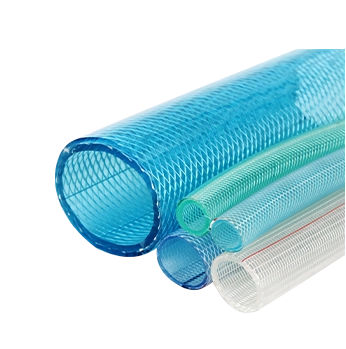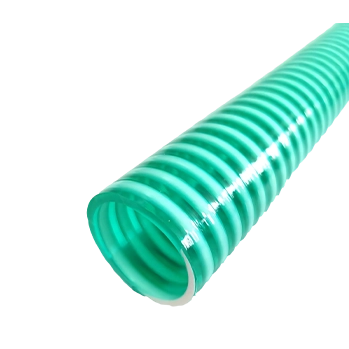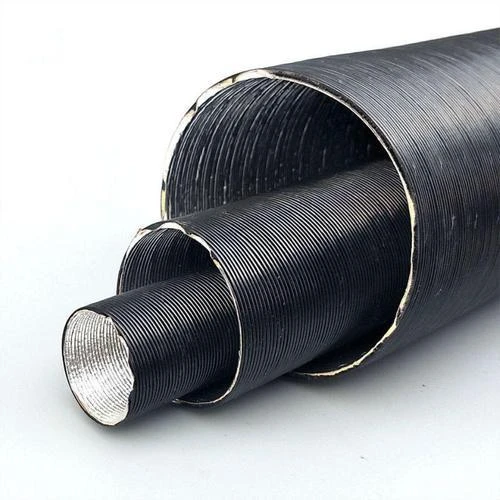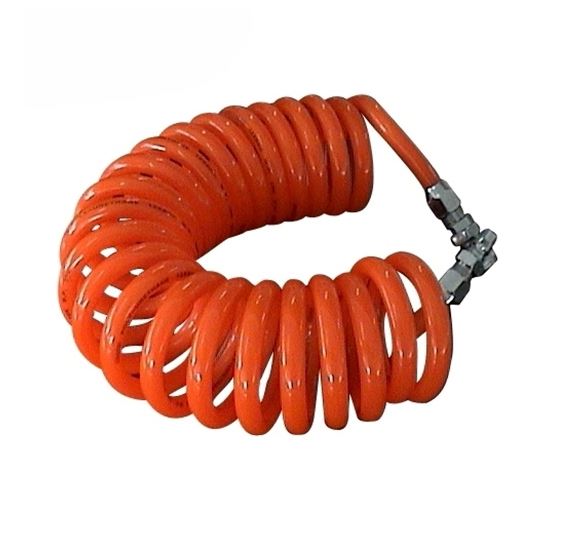جولای . 30, 2025 04:00
Back to list
Durable LPG Gas Hose for High Pressure & Safe Installations
LPG gas hoses are crucial for the safe and efficient transfer of liquefied petroleum gas in residential, industrial, and commercial scenarios. With the growing shift towards cleaner fuels and stricter safety regulations, the demand for high-performance, reliable, and customizable lpg gas hose solutions is at an all-time high. This article offers an in-depth exploration of lpg gas hose industry trends, top-tier manufacturing processes, regulatory requirements, and data-driven product comparisons.
1. Industry Trends & Regulatory Landscape: LPG Gas Hose
The rise in global LPG consumption, especially in Asia-Pacific (expected CAGR of 5.4% 2023-2027 – source), has driven manufacturers to innovate in hose safety, material science, and length customization.
- Key regulations: LPG gas hose regulations such as EN 1762:2018, ISO 2928, and ANSI/UL 21, specify material composition, pressure withstand, flame resistance, maximum permissible length, and traceability codes.
- Maximum Length: Global standards often restrict LPG gas hose maximum length to prevent drop in gas pressure and risk of abrasion—typically 1.5m for domestic, 5-10m for industrial (per ISHPMIE).
- High Pressure: High pressure LPG gas hose types must withstand 2-40 bar, demanding robust reinforcement, anti-leakage layers, and superior heat/corrosion resistance.
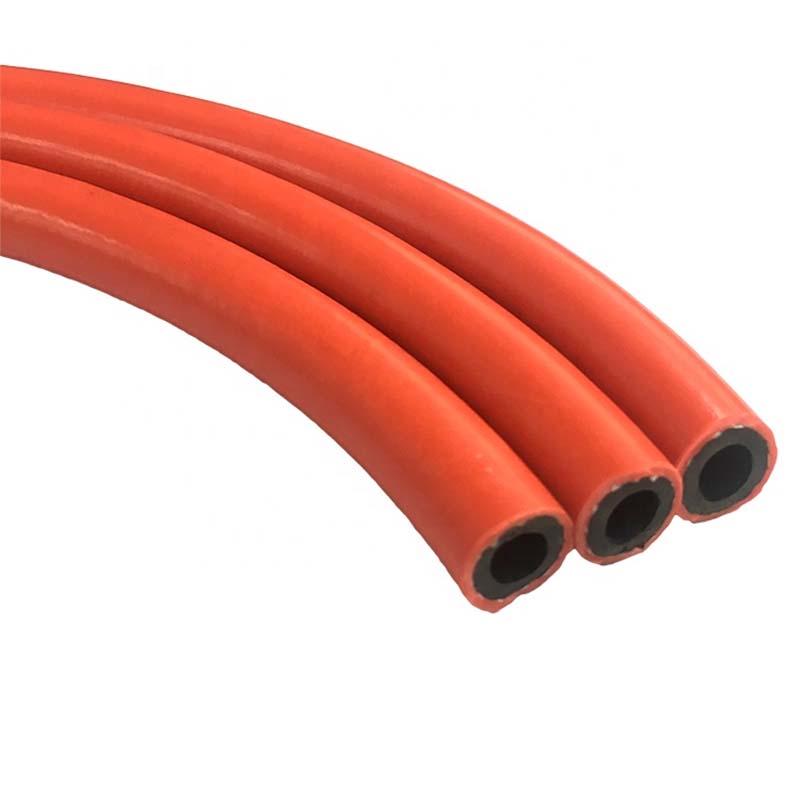
LPG Gas Transfer Hose Connection Hose for Stove combines advanced polymer engineering and stringent adherence to ISO/EN technical standards to deliver supreme safety in kitchen and commercial set-ups.
View Product Details
2. Technical Parameters & Global LPG Gas Hose Specifications
LPG gas hoses are defined by specifications such as working pressure, burst pressure, bending radius, material type, inner diameter, flame resistance, and maximum working temperature. Below is a global parameter comparison table reflecting industry data (derived from ISO, EN, and ANSI standards).
| Characteristic | Standard Domestic LPG Gas Hose |
High Pressure LPG Gas Hose |
Kebing LPG Gas Transfer Hose (Product Example) |
|---|---|---|---|
| Working Pressure | 2.0 bar | 10~40 bar | 2.5 MPa (25 bar) |
| Burst Pressure | 6.0 bar | 35~100 bar | > 10.0 MPa (100 bar) |
| Material | PVC Rubber, Fiber Reinforced | NBR/PVC, Double Layer, Steel Braid | High-Quality NBR/PVC + Polyester braid |
| Bending Radius | 60 mm | 80 mm | 60 mm |
| Inner Diameter | 8/9.5/12.5 mm | 8-20 mm | 8/9.5/12.5 mm |
| Certification | ISO 3821, EN 559 | EN 1762, UL21 | ISO 3821, EN 559, GB/T 2550 |
| Temperature Range | -20°C to +60°C | -35°C to +80°C | -25°C to +70°C |
| Lifetime (Hours) | 5,000 | 8,000+ | 10,000+ |
3. LPG Gas Transfer Hose Manufacturing Process: Step-by-Step Guide
Understanding the end-to-end manufacturing process underpins the credibility and performance of a lpg gas hose. Below is a diagrammatic workflow, from material input to final testing.

1. Raw Material Selection (NBR, PVC, Additives, Reinforcement Fiber)→2. Compound Mixing & Homogenization (Internal Mixer, Banbury/Roll Mills)
3. Extrusion of Inner Tube (Hot Vulcanization)→4. Reinforcement Braiding (Polyester/Steel Wire, CNC-Controlled)
5. Outer Layer Extrusion (PVC/NBR, Abrasion & UV Resistant)→6. Curing & Surface Testing (Shore Hardness, Color Code)
7. Quality Inspections (ISO 3821, EN 559, Pressure, Burst, Leakage Test)→8. Cutting & Assembly (Custom Length, Connectors, QR Batch Code, Marking)
9. Final Packaging & Delivery
Key Takeaways: Material selection and CNC-based braiding play a pivotal role in ensuring the hose's working pressure, flexibility, and compliance with stringent LPG gas hose regulations (such as ISO 3821). Typical product lifespan now exceeds 10,000 hours, with major players implementing continuous online testing for leak and tensile strength.
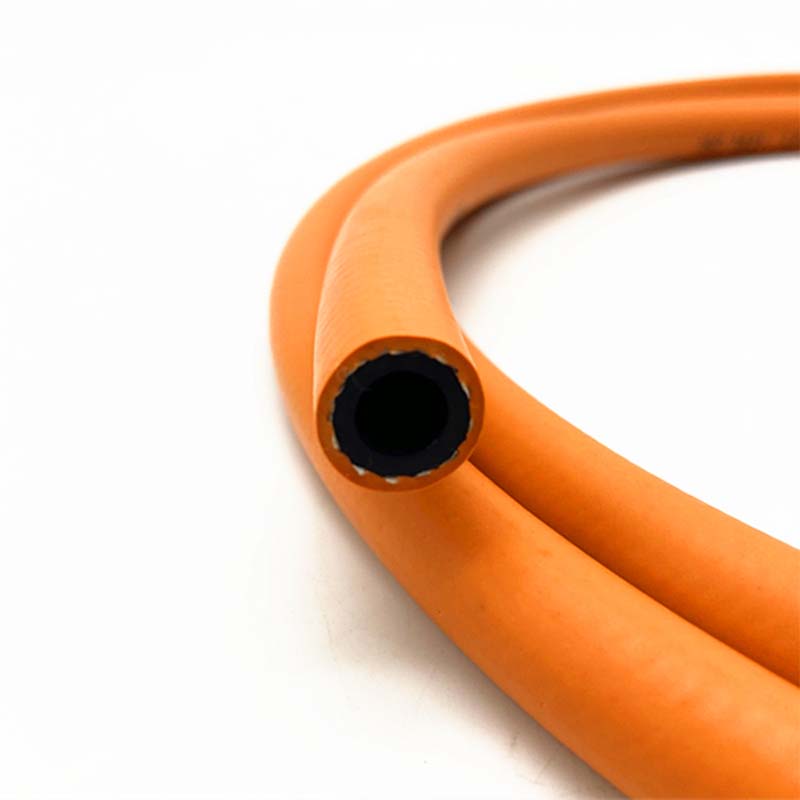
LPG Gas Hose Performance Radar (vs Standard Domestic)
4. Product Comparison: Kebing LPG Gas Transfer Hose vs Industry
For professional procurement, quantifiable comparisons matter. Below is a side-by-side comparison of the LPG Gas Transfer Hose Connection Hose for Stove and leading market competitors:
| Parameter | Kebing Hose | Competitor A | Competitor B |
|---|---|---|---|
| Max Working Pressure | 2.5 MPa (25 bar) | 2.0 MPa (20 bar) | 2.0 MPa (20 bar) |
| Burst Pressure | 10.5 MPa (105 bar) | 8.0 MPa (80 bar) | 7.9 MPa (79 bar) |
| Material | NBR/PVC Rubber + High Density Polyester | PVC Rubber + Polyester | NBR Rubber + PET |
| Certifications | ISO 3821, CE, EN 559 | EN 559 | ISO 3821 |
| Typical Service Life | ≥10,000 hrs | 6,000 hrs | 8,000 hrs |
| Maximum Length per Regulation | 3m (Domestic), 10m (Industrial) | 1.5m (Domestic), 5m (Industrial) | 1.5m (Domestic), 5m (Industrial) |
Expected Hose Lifetime Comparison
5. Customization & Engineering Services
Kebing Hose offers tailored engineering based on flow rate, working environment (UV, oil, abrasion), pressure requirements, and connection accessories (threaded, quick-coupling). Popular customizations include anti-static liners (for petrochemical sites), extra-long hoses (10-20 m, for LPG bulk filling), and color-coded outer covers (process safety).
Every order is validated for lpg gas hose regulations compliance, traceable with QR-coded batch ID, and delivered with product test certificates.
Every order is validated for lpg gas hose regulations compliance, traceable with QR-coded batch ID, and delivered with product test certificates.
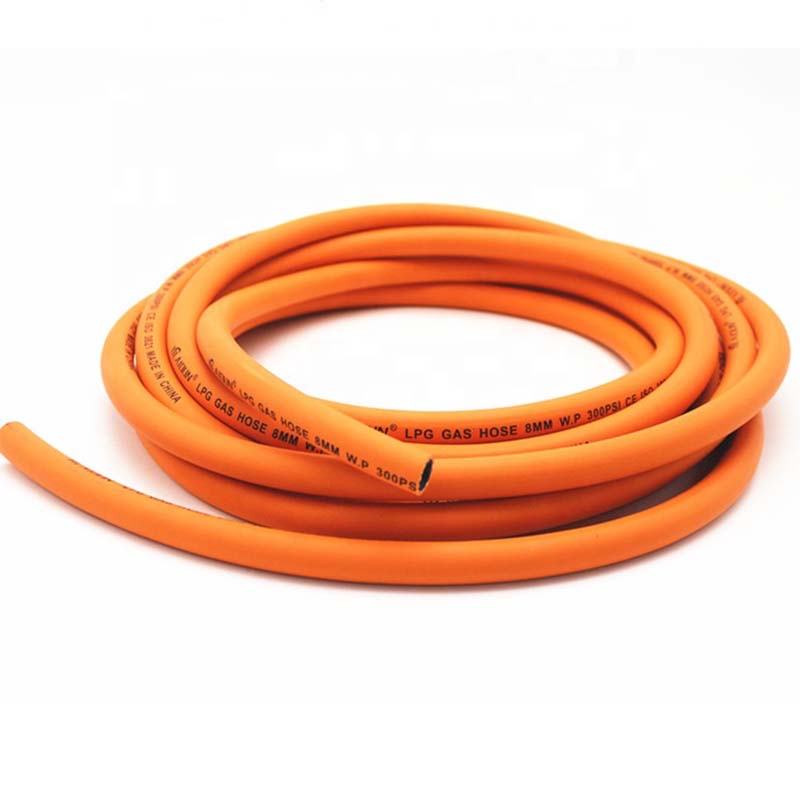
- Material variants: NBR/PVC, EPDM, composite rubber.
- Fitting types: brass, stainless steel, quick-connects.
- Branding: Custom print, color, anti-counterfeit features.
- Laser-etched ISO, EN, ANSI/UL marks for full traceability.
- Lead time: 5-12 working days for bulk orders & customs.
LPG Gas Hose Maximum Lengths Trend According to Regulations (2017-2023)
6. Application Scenarios & Case Analysis
LPG gas hose solutions serve a wide portfolio of use-cases, from home stoves to high-pressure refineries:
- Residential Gas Stoves: Optimal flexibility, kink-resistance, and non-toxic liner ensure food-grade and family safety. Kebing hoses are supplied to major appliance brands (exported to Europe, Middle East).
- Industrial Filling Stations: High-pressure, static dissipative hoses are critical for bulk tanker loading. Service contracts (since 2017) at Sinopec’s LPG stations show 0 hose-rupture incidents over 12,400 operating hours per asset.
- Petrochemical Plants: Custom anti-corrosive hoses (DN20, 15m) resist hydrocarbons and meet API/ISO safety audits. A Hong Kong refinery reported maintenance savings of 26% annually after switching to Kebing.
- Metallurgy Workshops: High temperature/abrasive environments require triple-layer extruded hoses. Kebing’s product, EN1762-marked, achieved 15% more cycles in bend/flex testing (third-party SGS lab data).
7. Customer Experience & Feedback
“We replaced our plant’s main lpg gas hose lines with Kebing hoses in 2022; safety checks improved, and we reduced downtime due to leaks. On-site installation support was a key differentiator.”
—Procurement Head, Petrochemical Facility, Malaysia
—Procurement Head, Petrochemical Facility, Malaysia
"Our food processing units are inspected for extreme hygiene. Kebing’s hoses’ inert liner and color coding perfectly aligned with our HACCP/ISO requirements. Delivery was fast, and technical support is responsive.”
—Equipment Engineer, European OEM
—Equipment Engineer, European OEM
8. Professional FAQ: LPG Gas Hose Terminology & Best Practices
Frequently Asked Technical Questions
Q1: What is the recommended material for a lpg gas hose?
Industry best practice favors NBR (nitrile butadiene rubber) + PVC composites, optionally reinforced with polyester fiber, offering high flexibility, chemical resistance, and superior aging properties.
Q2: Which international standards certify lpg gas hose safety and quality?
Key standards include ISO 3821 (for rubber hoses), EN 559/EN 1762 (Europe), ANSI/UL 21 (US), GB/T 2550 (China). All Kebing hoses comply with at least 2 of these standards, traceable by color code and batch label.
Q3: What is the maximum working/burst pressure for high pressure lpg gas hose?
High pressure hoses should sustain 20–40 bar working pressure and burst at >80 bar, as mandated by EN 1762. Kebing's hose is tested for up to 105 bar (SGS report).
Q4: How is lpg gas hose maximum length determined?
Regulations limit hose length to ensure pressure stability & prevent mechanical risks. Most countries set 1.5–3m max for domestic, 10m for industrial/filling scenarios, unless protected with conduit or external sleeve.
Q5: What installation standards should be followed?
Follow national gas codes (e.g., NFPA 54, GB50028), ensure proper tightening of connectors, no sharp bends (respect minimum bend radius), labels outward, and inspect for cracks every 12 months.
Q6: What is the typical production/lead time for a bulk lpg gas hose order?
Normal lead time is 5-12 days (ex-works, FOB China), depending on order size and customization; all hoses are pressure-tested before shipment.
Q7: What warranty and customer support is offered?
All Kebing lpg gas hoses come with 12–24 months warranty, free replacement for QC failing batches, and round-the-clock technical hotline support in EN, CN, and RU languages.
9. Delivery, Warranty & Customer Support
Lead Time: Standard: 7-10 working days. Custom specs: 12-15 days. Global express and DDP/DDU available upon request.
Quality Assurance: Each hose etched with traceable batch code, 12-month warranty, and accompanied by a test report.
Support: Dedicated presale and aftersale support, on-site engineering for volume projects, and multilingual documentation.
Quality Assurance: Each hose etched with traceable batch code, 12-month warranty, and accompanied by a test report.
Support: Dedicated presale and aftersale support, on-site engineering for volume projects, and multilingual documentation.
10. Sources & Industry References
- Statista. (2023). “LPG consumption in Asia-Pacific by country 2023.” View
- International Symposium on Hazards, Prevention and Mitigation of Industrial Explosions [ISHPMIE], 2021. “Safe Usage of LPG Hoses." Paper
- EN 1762: 2018 – Rubber hoses and hose assemblies for liquefied petroleum gas – Safety requirements.
- "Investigation on Hose Failure Modes," Process Safety and Environmental Protection, Elsevier, 2022.
- "Latest Developments in LPG Hose Technology," EnergyCentral, 2024.
- “LPG Gas Hoses: Safe Practices & Durability,” Gas Safe Forum, 2023. Read post
- International Symposium on Hazards, Prevention and Mitigation of Industrial Explosions [ISHPMIE], 2021. “Safe Usage of LPG Hoses." Paper
- EN 1762: 2018 – Rubber hoses and hose assemblies for liquefied petroleum gas – Safety requirements.
- "Investigation on Hose Failure Modes," Process Safety and Environmental Protection, Elsevier, 2022.
- "Latest Developments in LPG Hose Technology," EnergyCentral, 2024.
- “LPG Gas Hoses: Safe Practices & Durability,” Gas Safe Forum, 2023. Read post
Latest news
-
Top Quality Oxy Acetylene Hoses for Sale Fit for Welding DemandsNewsJul.28,2025
-
The Future of Pneumatic Air Tubes in IndustryNewsJul.28,2025
-
Superior and Reliable LPG Hose Pipe Solutions for Every NeedNewsJul.28,2025
-
Exceptionally Durable and Versatile Premium Braided PVC TubingNewsJul.28,2025
-
Best Adapters for Connecting Garden Hose to PVC Pipe ConnectionsNewsJul.28,2025
-
The Essential Role of LPG Hoses in Safe and Efficient Gas DistributionNewsJul.16,2025
HOT PRODUCT
Provide You The Highest Quality Work
INQUIRE



